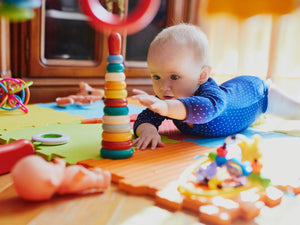Sometimes during labour things don’t go according to ‘plan’. There may be birth complications and a need for some kind of assisted birth. This may be because baby is getting tired and distressed and needs to be born quickly, or sometimes no matter how hard mum is working and pushing, she may need some extra help. There can also be circumstances that require baby to born more quickly.
Whatever the reason, your caregiver or obstetrician will assess the need and level of intervention required.
What Types Of Interventions Are Used?
Ventouse (Vacuum)
A ventouse (also known as a vacuum) is generally the first level of intervention used. This is a suction device that is placed over the crown of baby’s head and utilising the force of the contraction, mums effort in pushing and the pulling of the vacuum, baby is born.
Forceps
If a vacuum is unable to be used, for instance if baby is higher up in the vaginal canal or in a position not conducive to using a vacuum, then forceps will be used. The forceps are gently placed one at a time into the vagina on either side of baby’s head and cheeks, and with the force of the contraction, pushing effort by mum, the obstetrician will gently ease the baby out. Unfortunately, sometimes an episiotomy may have to be performed which is a cut at the perineum, at the time of the head crowning, to allow for more room for the head to be born.
Caesarean Section
Even if all efforts have been used to achieve a natural birth, sometimes there are circumstances that require a caesarean section. This can be an emergency or non-emergency caesarean section. Your midwife and doctor will keep you both informed and reassured. Your baby may be in distress, dilatation may not be happening and occasionally all efforts to push just don’t result in a vaginal birth. The most important factor in all of this is that there is a safe outcome for mum and baby. Often if this happens it is a good idea to debrief with your midwife and doctor at a later stage to find out exactly what happened so that you can understand why.
How Often Do Birth Complications Occur?
Birth complications occur more often than you may think. However, the most important thing to reiterate is that there is a safe outcome for mum and babe. When you engage your caregiver you are placing your trust in their knowledge and expertise. So my advice is to educate yourself as thoroughly as possible, over the course of your pregnancy. You can do this by watching our labour and birth video, reading books and talking to friends and family who have experienced labour and birth. Having a warm and open communication channel between you and your caregiver is also extremely important. You develop an amazing and trusting relationship with them over the course of your pregnancy.
Our Products
-

01. Guide to a Healthy Pregnancy
$55 -

02. Positive Birthing Course
$55 -

03. Infant Feeding Guide
$55 -

04. Baby Sleep Guide - First 12 Months
$55 -

05. Toddler Parenting Course 1 - 3 Years
$55
-
 When to Start Antenatal Classes?
When to Start Antenatal Classes?
Becoming a parent is an incredible milestone, but it comes with a host of changes that can be daunting, especially for first time parents. Antenatal classes are all about offering expectant parents the education they need to make informed decisions, look after their bodies and care for their newborn babies. While you probably already have a long list of things you need to accomplish during your pregnancy, it’s a good idea to make time to attend antenatal classes.
-
 Development Milestones 4-8 Months
Development Milestones 4-8 Months
As they reach the middle of their first year, you'll start to see bigger leaps in their growth and ability!
In this article, we’re going to discuss your baby’s developmental milestones between 4-8 months, and what you can expect along the way.





 When to Start Antenatal Classes?
When to Start Antenatal Classes?
 Development Milestones 4-8 Months
Development Milestones 4-8 Months








